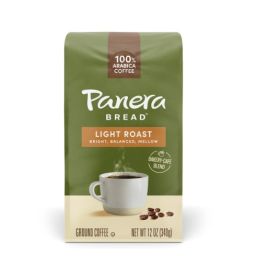
It’s generally advised against putting milk directly in coffee makers due to several reasons such as health risks and damage to the machine.
Key Takeaways about putting Milk In Coffee Maker
- Milk and Coffee Makers Don’t Mix Well: Using milk instead of water in your coffee maker can lead to issues like clogging and even corroding its internal components.
- Health Risks: Milk can foster the growth of bacteria such as E.coli and Salmonella in your coffee maker, posing serious health risks.
- Impact on Taste: Milk burns at a lower temperature than water, which can result in a burnt taste in your coffee.
- Better Methods Available: There are safer and more effective methods to incorporate milk into coffee, ensuring both taste and machine longevity.
Health Risks from Bacterial Growth
The Hidden Dangers: Placing milk in a coffee maker can create a perfect environment for harmful bacteria to thrive. Milk provides a nutrient-rich medium that bacteria like E.coli and Salmonella can easily colonize. These bacteria can multiply rapidly, especially when the milk is kept at warm temperatures typical inside coffee makers.
What This Means for You: The presence of these bacteria can lead to foodborne illnesses, which might manifest as anything from mild gastrointestinal discomfort to severe health issues. Regular cleaning might not be enough to rid your coffee maker of these bacteria once they’ve established themselves, leading to continuous risk each time you use the machine.
A Safer Cup: To enjoy your coffee with milk without the risk, consider heating the milk separately using a microwave or a stovetop and then adding it to your brewed coffee. This way, you keep your coffee maker safe from damage and your coffee free from bacteria.
Impact on Coffee Maker Functionality
The Clog and Corrosion Conundrum: When milk is used in a coffee maker, it can lead to significant issues beyond just a simple cleanup. Milk proteins and fats can harden inside the machine, clogging its tubes and filters. This is not just a surface problem; these residues can get deep into the machine’s internal mechanisms.
Cleaning Challenges: The sticky residue left by milk can be tough to clean and may require frequent deep cleans to maintain the machine’s functionality. Over time, this not only becomes a hassle but can also corrode parts of the machine, such as the heating element and the internal pipes. Corrosion can lead to malfunctions, reducing the lifespan of your coffee maker.
Effects on Coffee Quality
Heating milk in a coffee maker often leads to undesirable changes in the flavor of your coffee. Milk scorches at lower temperatures compared to water, which means it can burn before the coffee brewing process is complete, imparting a burnt taste to your coffee.
The consistency of coffee can also be compromised. Milk does not extract coffee solubles as effectively as water does, resulting in a brew that can taste diluted or overly milky, rather than rich and robust. This change not only affects the strength but also the subtleties of the coffee’s natural flavors, often overshadowing them with the taste of heated, sometimes even scorched, milk.
Using External Methods to Heat and Froth Milk
A quick and easy way to heat milk without using your coffee maker is by using a microwave. Simply pour the milk into a microwave-safe container and heat it for about 30-45 seconds, depending on the amount. This method is fast and convenient, especially when you’re in a rush.
For those who enjoy a creamy froth on top of their coffee, using a milk frother is an ideal solution. Milk frothers come in various forms, including handheld electric frothers, battery-operated models, and manual pump versions. These devices quickly aerate the milk, creating a rich and creamy froth that can be added to your coffee, mimicking café-style beverages.
Recommended Coffee Makers with Built-In Milk Options
For coffee enthusiasts looking to streamline their brewing experience, coffee makers with built-in milk steamers are a great investment. These machines combine coffee brewing and milk heating/frothing in one device, making it easier to prepare complex espresso-based drinks like lattes and cappuccinos at home.
Several models on the market cater to different preferences and budgets. Look for features like adjustable steam controls, which let you customize the froth level and temperature, ensuring your milk is steamed to perfection without the risk of scalding.
Can You Put Milk in a Coffee Percolator, French Press, or Drip Coffee Maker?
Coffee Percolators
It’s not recommended to put milk in a coffee percolator. Percolators brew coffee by repeatedly cycling the boiling brew through the grounds using gravity until the required strength is reached. Adding milk instead of water can cause the milk to scorch, leaving you with a burnt flavor. Moreover, the milk solids can clog the percolation mechanism, leading to functional issues and a challenging cleanup process.
French Press
Similarly, using milk in a French press is not advisable. A French press requires a coarse grind and uses steeping as its brewing method. Milk’s protein and fat content will not only alter the extraction process of coffee flavors but also may result in a messy, sticky residue that is hard to clean and could potentially spoil, promoting bacterial growth.
Drip Coffee Makers
As for drip coffee makers, these devices are specifically designed to heat water to an optimal temperature that extracts flavor from coffee grounds. Replacing water with milk could damage the internal heating elements due to the lower scorching point of milk. Additionally, the leftover milk residue can spoil, leading to health risks and possible machine damage over time.
FAQs
Can you put milk in a coffee percolator? No, it is not advisable to put milk in a coffee percolator. Milk can scorch due to the high temperatures involved in percolation, potentially clogging the mechanism and leaving a burnt taste.
Is it safe to use milk in a French press? Using milk directly in a French press is not recommended. Milk’s fat and protein can interfere with the extraction process of coffee and can be difficult to clean, leading to spoilage and bacterial growth.
Can you add milk instead of water in a drip coffee maker? No, you should not use milk instead of water in drip coffee makers. Milk can damage the internal components of the machine, such as the heating elements, and spoil, which may pose health risks.
What are the risks of putting milk in coffee makers? The main risks include damage to the coffee maker due to milk scorching and clogging, bacterial growth from milk spoilage, and undesirable changes in the flavor of your coffee.
How can I safely add milk to my coffee? To safely add milk to your coffee, heat the milk separately using a microwave or stovetop and then add it to your brewed coffee. Alternatively, use a coffee maker with a built-in steamer or frother that is designed to handle milk.
Are there any coffee makers that can handle milk? Yes, some coffee makers come with built-in milk steaming or frothing capabilities, specifically designed for making lattes, cappuccinos, and other milk-based coffee beverages without damaging the machine.
Final Thoughts
Using milk directly in any coffee maker, be it a percolator, French press, or drip machine, generally poses more risks than benefits. The high likelihood of damaging your coffee maker, coupled with the potential for bacterial growth and unpleasant flavors, makes this practice inadvisable.
For those who enjoy milky coffee beverages, consider heating your milk separately using a microwave or a stovetop. Alternatively, invest in a coffee maker with a built-in steamer or frother, designed to handle milk properly without compromising the functionality of your machine or the quality of your coffee. This way, you can enjoy the richness of milky coffee safely and efficiently.









